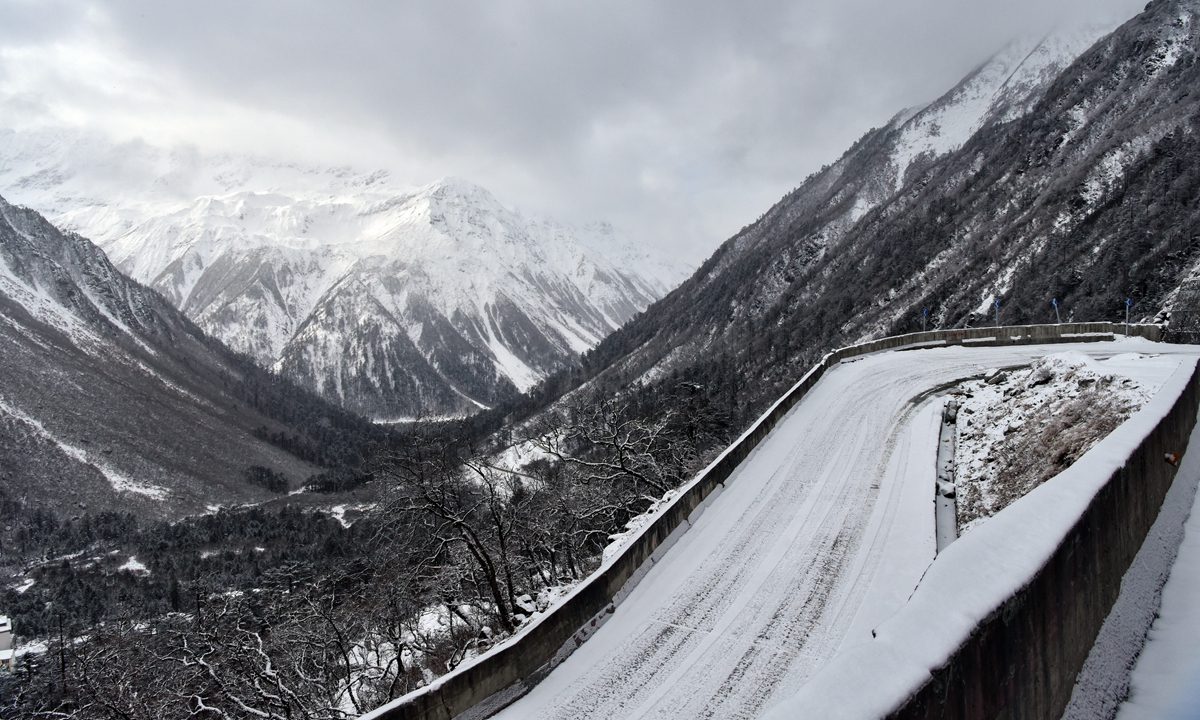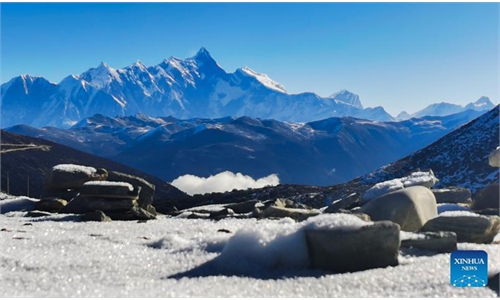
A road in Nyingchi city in Southwest China's Xizang (Tibet) Autonomous Region Photo: IC
China's Ministry of Civil Affairs has standardized the names of 11 places in Zangnan (southern part of Southwest China's Xizang Autonomous Region) in Chinese characters, Tibetan and pinyin, in accordance with regulations on geographical names issued by the State Council, China's cabinet.
Experts noted on Monday that it is a legitimate move and China's sovereign right to standardize the geographical names.
The official names of the 11 places were released by the ministry on Sunday, which also gave precise coordinates, including two residential areas, five mountain peaks, two rivers and two other areas. It also listed the category of places' names and their subordinate administrative districts.
This is the third batch of standardized geographical names in Zangnan issued by the civil affairs ministry. The first batch of the standardized names of six places in Zangnan was released in 2017, and the second batch of 15 places was issued in 2021.
Zangnan is located in Southwest China's Xizang region which has been China's territory since ancient times. In order to strengthen the standardized administration of place names, China's move to standardize the names in Zangnan completely "falls within China's sovereignty" and it is also in accordance with the regulation on the administration of geographical names, Zhang Yongpan, a research fellow of the Institute of Chinese Borderland Studies of the Chinese Academy of Social Sciences, told the Global Times on Monday.
It is more meaningful to safeguard national sovereignty, maintain peace in border regions and manage border-related matters at the legal level, Zhang said. For instance, some river names were standardized, making people more aware of China's territory, Zhang explained.
A revised rule on the management of place names by the State Council came into effect on May 1, 2022. The regulation requires strict management over the naming and renaming of localities and sites.
The names were written both in standard Chinese characters and Tibetan, reflecting the respect for ethnic culture in accordance with the law, Zhang noted. Meanwhile, the third batch of standardized names added corresponding pinyin, which will help people to remember and identify these place names more conveniently and accurately.
In the case of multiple names in one place, a unified name was made to make it standardized, according to Zhang.
Global Times

